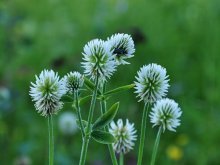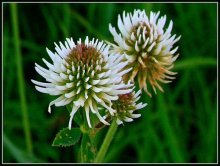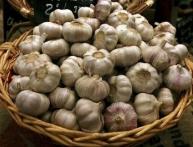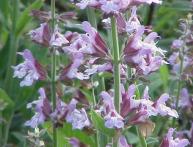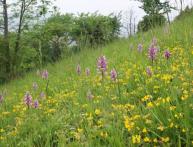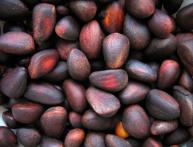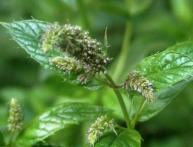Clover type: mountain
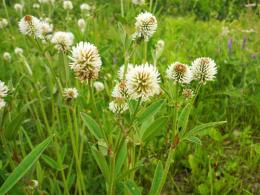
There are about 220 species and varieties of clover worldwide. The distribution of this plant on the globe is quite extensive. Clover is widespread in temperate and subtropical zones throughout the Northern Hemisphere, in part of the Southern Hemisphere of the Earth, in particular in South America.
Clover has also become somewhat widespread in Africa, in the area of tropical forests. More than 30 species of this plant are found throughout Russia, Belarus and Ukraine. Any clover is a good honey plant and forage plant.
Content:
general information
Clover is one of the most common herbaceous plants. It is found almost everywhere. Anywhere, looking around, you can come across a bunch of clover. Be it a field, meadow, edge of a forest, the banks of a reservoir, a park in the city, a courtyard garden, vegetation near the wall of a house or a fence - clover grows everywhere. However, this plant is not generally considered a weed.
Clover, widespread everywhere, enriches the soil with nitrogen. It does not devastate the soil, but on the contrary, benefits it. This happens only due to the fact that clover has miniature nodules on its roots. They contain bacteria that absorb nitrogen from the atmosphere and modify it into compounds needed by other plants.
IN flowering period, which falls in May-July, plots with clover immediately catch the eye.The bright flowers of the plant, from bright red to snow-white, are clearly visible on the green carpet of herbs.
Clover belongs to the legume family. All its species are annual or perennial herbs, often with woody rhizomes. Clover leaves are usually trifoliate, but four-leaf varieties are also found. The flowers are collected by the heads into inflorescences, forming visually spherical heads. The common popular name for all types of clover is Kashka.
The scientific Latin name of this plant is Trifolium. Translated into Russian from Latin, this means “shamrock.” Almost all varieties of clover have 3 leaves.
Since ancient times, the trifoliate leaf of this plant was considered a symbol of the Holy Trinity throughout Europe. The image of clover is often present in embroidery, ornaments, architectural structures, and jewelry. The most popular image of clover in Gothic style. Some European city coats of arms have a clover leaf in their image. But the greatest success is considered to be a find - a clover with four leaves. There is a belief that such a clover leaf brings happiness and fulfills wishes.
Often clover leaf in the Middle Ages they carried them with them. It was believed that it protects the owner from bad luck. Clover was used for fortune telling. Some countries have issued coins with the image of a clover leaf. So in 1775 the clover thaler was introduced into use.
- All people are familiar with the suits of playing cards. These suits were originally leaf designs. So “peaks” are a linden leaf. And “clubs” are a clover leaf. This is how the word “club” is translated from French.
- Ireland is a country with centuries-old traditions. The shamrock clover symbol is important to the Irish.Clover became the emblem of Ireland, symbolizing the triple unity: God the Son, God the Father and the Holy Spirit.
- It is believed that baptism on Irish soil was carried out by St. Patrick using a clover leaf.
- Another legend is that St. Patrick drove snakes out of Irish soil with clover (they are not there to this day).
- For the Celts, the clover leaf symbolizes the connection with the world of the dead, combining birth - death - rebirth.
If we consider the clover leaf as a magical instrument, then it is believed that this plant has a warm aura. Clover belongs to four elements at once, although Mercury has a special influence on it. Often used in witchcraft and folk medicine. It is believed that a flower or clover leaf seen in a dream is a harbinger of fame, wealth, and success.
mountain clover
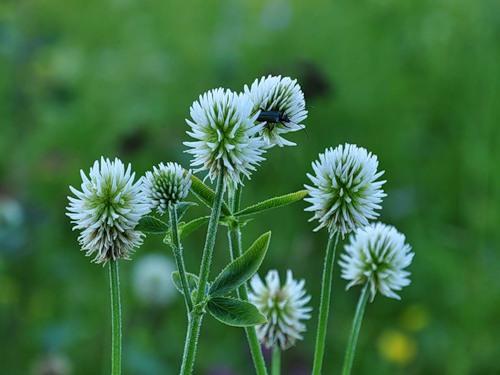
Mountain clover or whitehead is one of the common types of clover. This species is found everywhere throughout Belarus, Crimea, the Caucasus, throughout Western Siberia, in the foothills of Central Asia, and in central Europe. It grows in open places, on dry soils.
Prefers to settle on the slopes of ravines, ravines, and hills. During its flowering period from the beginning of June to the end of July, it turns the entire inhabited landscape into a white fragrant carpet.
It is distinguished by its slender stem. Rarely forms thickets. The height of the stem can reach 70 centimeters in some places. The number of stems in one plant can reach up to 15 pieces. The stems of mountain clover are straight, round, and have a pubescent edge. The stem of this type of clover has few leaves, usually no more than 4. Shoots emerge from the leaf axils. The leaves of mountain clover, like most species of this plant, are trifoliate.
The basal leaves are located on long stalks, the stem leaves are sessile. The tubes of the flowers are collected in heads, there are from 80 to 280 of them. The flower heads themselves are dense and small, white in color. The structure of mountain clover flowers is identical to other common species.
mountain clover has 10 stamens, 9 of which are fused together and only one is free. At the very base, where the ovary is located, nectar is secreted. Its sugar content often reaches 48%. This makes mountain clover an excellent honey plant.
Mountain clover blooms in a unique way: the tubes in each head bloom gradually, from bottom to top. The entire plant blooms for no more than 30 days, and each head lasts up to 2 weeks. The flowers open late, not earlier than 11 o'clock in the afternoon, and close early. During the flowering period, bees take nectar until the very last day. After flowering, the flowers turn brown and dry out. The seeds ripen in August and are similar in appearance to all other seeds of other types of clover. Seeds are two-seeded beans.
Nutrient content
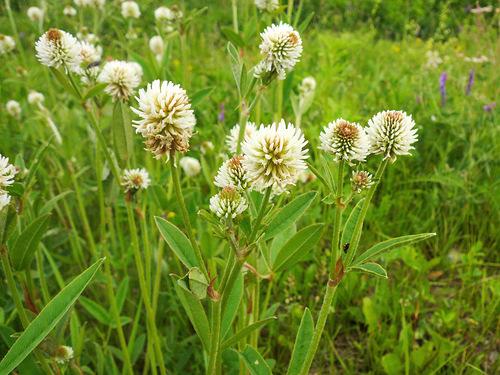
Mountain clover is medicinal plant, where only the ground part is suitable for use.
Whitehead contains:
- B vitamins
- essential oils
- carotene
- vitamin C
- trifoline
- coumarin
- flavonoids (populin, kaempferol, hyperoside, quercetin, genistein and other compounds)
More than 15% of various plant proteins and almost 3% of plant fats were found in mountain clover grass.
Official medicine does not use mountain clover, but it is popular in folk medicine.Mountain clover is popularly known by the names: white clover, knitted clover, white clover, white trefoil, white nut, mountain amoria, cuckoo, honey clover, horse grass, cat's paw, white tripe, catnip, coriga, white woodpecker.
Application
In folk recipes, this type of clover is used as an anti-inflammatory, expectorant, diuretic and antibacterial agent. Infusions or decoctions are prepared from the herb. They relieve swelling, treat lung diseases, and relieve abdominal pain. A strong, rich decoction of mountain clover treats hernia.
Mountain clover inflorescences brewed as tea are drunk by women during leucorrhoea. This tea is not only healthy, but also delicious. Tea made from mountain clover flowers is considered an excellent regulator of gastrointestinal activity. The decoction is used for influenza. And the essence of flowers is used for infectious mumps.
In the form of poultices decoction of flowers used externally for abscesses, burns, hemorrhoids. This is an excellent wound healing agent. The decoction is often used to take restorative baths.
As a forage plant, this type of clover is not particularly widespread. This is due to the fact that the stem of mountain clover is dense and rigid and has a edge. However, wild animals use it for food.
Clover is listed in the Red Book and is good for health. Watch the video:
Interesting information about the vegetable garden

